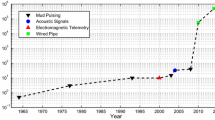Abstract
This paper presents a review of publications on methods for estimating the dynamic measurement error and methods for its correction. The error components are due to the dynamic properties (inertia) of the sensor and the additive noise at its output. A method is proposed for estimating and reducing the dynamic measurement error based on the principle of adaptive linear prediction or adaptive linear signal amplification. This approach generates an error estimation signal based on the result of comparing a delayed copy of the recovered signal with the same reconstructed signal passed through an adaptive nonrecursive filter with a linear phase characteristic. Based on this approach, a measurement system structure has been developed to estimate the dynamic measurement error and reduce it by correcting the dynamic characteristics of the sensor and adaptive filtering of measurement noise. A computer simulation of the proposed measurement system for a second-order sensor was performed. Optimal (in the sense of the mean squared deviation of the error) orders of the restoring adaptive filter were obtained in the presence of additive harmonic noise with variable frequency at the sensor output. The properties of the proposed measurement system structure with a dynamic measurement error estimator adaptive to the noise parameter are determined. The application field of the results obtained is the processing of measurement results of rapidly varying processes (including in real time), when the component of the dynamic measurement error caused by the dynamic properties (inertia) of the sensor, as well as the additive noise at its output, is dominant. The solution to such a problem is relevant, for example, when processing the results of ground tests of space technology.



Similar content being viewed by others
Notes
GOST 8.009-84. State System for Ensuring Uniform Measurement. Standardized Metrological Characteristics of Measuring Instruments.
References
Volosnikov, A.S.: Meas. Techn., 65. No 10, 720–728 (2023). https://doi.org/10.1007/s11018-023-02144-6
Elster, C., Link, A., Bruns, T.: Meas. Sci. Technol. 18(12), 3682–3687 (2007). https://doi.org/10.1088/0957-0233/18/12/002
Link, A., Elster, C.: Meas. Sci. Technol. 20(5), 55104 (2009). https://doi.org/10.1088/0957-0233/20/5/055104
Eichstadt, S., Link, A., Elster, C.: Sensors 10(8), 7621–7631 (2010). https://doi.org/10.3390/s100807621
Eichstadt, S., Elster, C., Smith, I.M., Esward, T.J.: J. Sens. Sens. Syst., 6. No 1, 97–105 (2017). https://doi.org/10.5194/jsss-6-97-2017
Eichstadt, S., Elster, C., Esward, T.J., Hessling, J.P.: Metrologia 47(5), 522–533 (2010). https://doi.org/10.1088/0026-1394/47/5/003
Eichstadt, S., Link, A., Harris, P., Elster, C.: Metrologia 49(3), 401–410 (2012). https://doi.org/10.1088/0026-1394/49/3/401
Esward, T.J.: Tm—technisches Mess. 83(10), 557–564 (2016). https://doi.org/10.1515/teme-2015-0128
Fujii, Y., Maru, K.: Exp. Tech. 35(3), 5–20 (2011). https://doi.org/10.1111/j.1747-1567.2009.00594.x
Hessling, J.P.: Meas. Sci. Technol. 17(10), 2740–2750 (2006). https://doi.org/10.1088/0957-0233/17/10/028
Markovsky, I.: IEEE Signal Process. Lett. 22(8), 1094–1097 (2015). https://doi.org/10.1109/LSP.2014.2388369
Monti, A., Ponci, F.: IEEE Trans. Instrum. Meas. 59(11), 2825–2833 (2010). https://doi.org/10.1109/TIM.2010.2060913
Shestakov, A.L.: IEEE Trans. Instrum. Meas. 45(1), 250–255 (1996). https://doi.org/10.1109/19.481342
Shestakov, A.L.: Dynamic Measurements Based on Automatic Control Theory Approach, in Advanced Mathematical and Computational Tools in Metrology and Testing X, pp. 66–77 (2015). https://doi.org/10.1142/9789814678629_0008
Shestakov, A.L.: Methods of the Theory of Automatic Control in Dynamic Measurements, monograph, izdatelskiy centr YuUrGU. Chelyabinsk (2013)
Granovsky, V.A.: Dynamic Measurements: Fundamentals of Metrological Support [in Russian. Energoatomizdat, Leningrad (1984)
Ramli Roshahliza, M., Ali, O.A.N., Salina, A.S.: A review of adaptive line enhancers for noise cancellation. Aust. J. Basic Appl. Sci. 6(6), 337–352 (2012)
Hayes, M.H.: Adaptive Filtering, in Statistical Digital Signal Processing and Modeling. John Wiley & Sons, pp. 493–570 (1996)
Diniz, P.: Adaptive Filtering: Algorithms and Practical Implementation (fourth edition). Springer New York (2008)
Funding
This work was supported by the Ministry of Science and Higher Education of the Russian Federation (State Assignment for Fundamental Scientific Research No. FENU-2023-0010 (2023010GZ)).
Author information
Authors and Affiliations
Corresponding author
Additional information
Translated from Izmeritel’naya Tekhnika, No. 10, pp. 25–31, October, 2023. Russian https://doi.org/10.32446/0368-1025it.2023-10-25-31
Publisher’s Note
Springer Nature remains neutral with regard to jurisdictional claims in published maps and institutional affiliations.
Original article submitted May 18, 2023. Original article reviewed September 18, 2023. Original article accepted September 19, 2023
Rights and permissions
Springer Nature or its licensor (e.g. a society or other partner) holds exclusive rights to this article under a publishing agreement with the author(s) or other rightsholder(s); author self-archiving of the accepted manuscript version of this article is solely governed by the terms of such publishing agreement and applicable law.
About this article
Cite this article
Volosnikov, A.S. Adaptive linear estimation of the dynamic measurement error. Meas Tech 66, 755–764 (2024). https://doi.org/10.1007/s11018-024-02289-y
Published:
Issue Date:
DOI: https://doi.org/10.1007/s11018-024-02289-y




